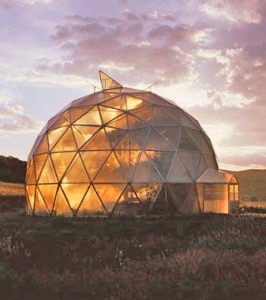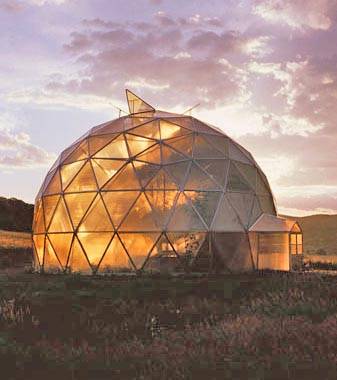 Human well-being and the health of our ecosystems is dependant on the development and deployment of solutions to advance those values. Influencing the next generation before and during its ascendance requires scientific based design and technologies aimed at the restorative world and all benefits of humanity.
Human well-being and the health of our ecosystems is dependant on the development and deployment of solutions to advance those values. Influencing the next generation before and during its ascendance requires scientific based design and technologies aimed at the restorative world and all benefits of humanity.
The Buckminster Fuller Institute is doing just that, and the world’s most creative minds are stepping up to take their place deep within this corner of the scientific community.
The Buckminster Fuller Institute’s programs combine unique insight into global trends and needs with a comprehensive approach to design. Much of this is inspired by Fuller’s geodesic dome—a self sustaining structure removing the laws of weight-related physics that not only stands as an architectural wonder, but as a blueprint for planetary sustainability.
Projects
Participants are chosen to develop and apply transformative strategies based on a stringent thinking process. All the while Nature’s fundamental principles are ethically driven in a worldview. There are several projects on the table that embark upon these values. By facilitating convergence across the disciplines of art, science, design and technology, our work extends the profoundly relevant legacy of R. Buckminster Fuller. In this way, we strive to catalyze the collective intelligence required to fully address the unprecedented challenges before us.
Sustainable living
In its effort to stay true to form, the Buckminster Fuller Challenge awarded the 2012 prize to the Living Building Challenge, a project that requires structures of all scales to be built in operational form complying with beauty, cleanliness, and that thrive as efficiently as nature’s own trees. These structures require zero energy or waste and water to be deemed operational.
There are other fundaments that make a building truly green and sustainable. For example, the top sustainable buildings use an architectural feature called solar harvesting in which energy-saving efforts are implemented throughout the building. Sensors trigger solar powered lights to shut off when sunlight is at suitable levels in the rooms, and to switch on when the evening time sets in. In most cases the architect will construct the buildings to get maximum sunlight. The censors are examples of the technology for the future—mobile devices fed from the sun’s rays to accommodate solar harvesting and other forms of innovative living.
Urban sustainability
Large cities have higher temperatures than towns and villages. The pavement, building materials, and glass windows absorb or reflect heat and create a metaphorical oven known as the urban heat effect. Energy usage in cities like Los Angeles and Dallas are, as a result, ridiculously high. But thanks to the influence of sustainability, green roofs are making a difference. These roofs last longer than traditional ones and reduce energy by granting natural insulation. They also reduce the urban heat effect substantially and provide a calming, Zen-like atmosphere for over stressed workers.
It started with a dome
Buckminster’s dome with its sustainable design features have inspired designers, scientists, tech gurus and architects to take those principals and utilize them into their appropriate crafts. As a result the world is taking one step further towards a better existence with structures boasting greener living.
Image source: http://0.tqn.com/d/architecture/1/0/C/o/geodesicdome02.jpg
How a Dome Influenced Sustainable Living

